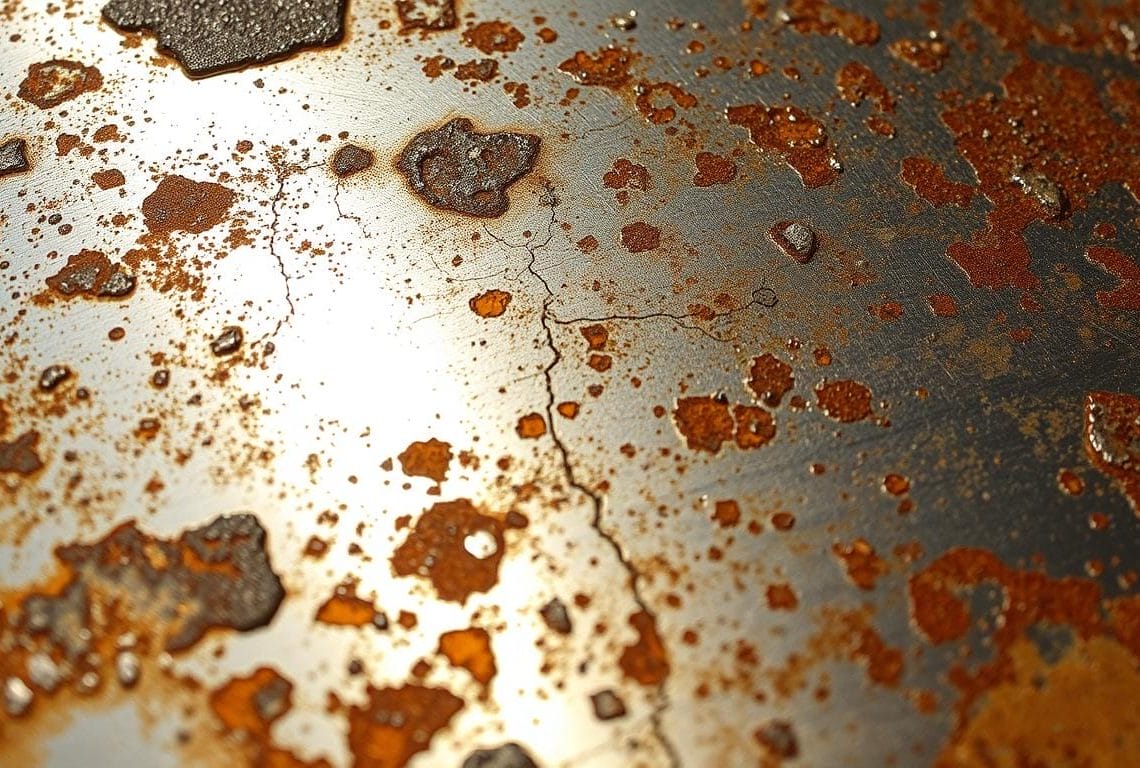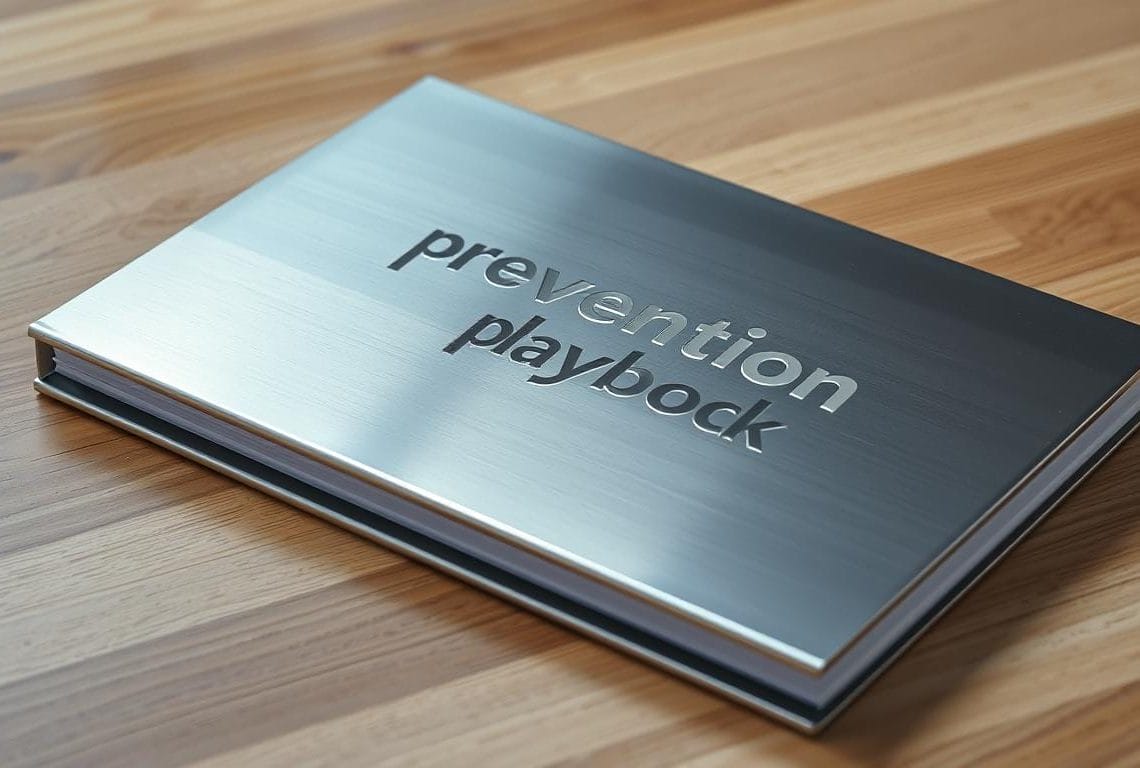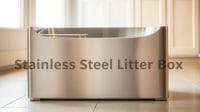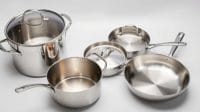Have you ever wondered if that shiny alloy on your racks and parts can fail under real use? I start here because the simple truth surprises many: the chromium-rich surface forms a protective oxide layer, yet the metal can still corrode when conditions line up against it.
I explain the core chemistry in plain terms. When iron in an alloy meets water and oxygen, corrosion can begin. Salt, heat, stray electrical currents and low-oxygen crevices speed the process.
Field risks I watch for include chloride pitting, galvanic contact with other metals, and iron contamination from shared tools. Grades with molybdenum, like 316 versus 304, show better resistance near seawater and deicing salts.
My goal is practical: you will learn which factors trigger surface attack and which maintenance, design, and treatments—like passivation and pickling—help preserve product life. For a focused primer on whether this happens in real cases, see my linked resource on stainless performance.
My quick primer: the passive layer that makes stainless steel “stainless”
The real protector is a microscopic oxide film that forms on the surface. I define this passive layer as a self-forming chromium-oxide skin just a few atoms thick that shields stainless steel from corrosion and gives it much better corrosion resistance than ordinary steel.
The oxidation process behind rust starts when iron meets water and oxygen and forms iron oxides. Add salt, heat, or stray electrical current and the reaction speeds up, which can undercut protection fast. Even stainless steel, known for its resistance to corrosion, can succumb to rust under certain conditions. This leads to the question of why stainless steel rusts, particularly when it is exposed to environments with high chloride levels or when its protective layer is damaged. Understanding these factors is crucial for maintaining the integrity of metal structures and preventing costly repairs.
The passive film needs oxygen to heal after small scratches. In oxygen-poor gaps or stagnant liquid the film can fail. That explains why a clean, brushed surface exposed to air will re-passivate after a light scratch, while a scratch trapped under a gasket in standing water may not.
I also compare alloys at a glance: more chromium helps, and molybdenum additions—seen in 316—raise resistance in chloride-rich environments. Remember that the alloy still contains iron, so if the protective film is breached and chemicals concentrate, rust can begin.
- Layer type: chromium-oxide, self-healing
- Failure points: low oxygen, deposits, strong chemicals
- Practical note: choose alloys with the right composition for your environment
what causes stainless steel to rust: the real-world factors I watch
I track real-world triggers that erode the protective film and let visible corrosion start.

Strong chlorides drive pitting corrosion. Near salt spray or deicing zones, I prefer 316 grade because molybdenum helps resist localized attack.
Galvanic mismatches
When dissimilar metals touch in wet, conductive conditions, the less noble metal corrodes faster. I isolate joints, match alloys, or control the electrolyte to cut galvanic corrosion risk.
Iron contamination and heat
Carbon-steel particles from tools seed corrosion on a clean surface. I enforce dedicated tooling and cleaning. During welds at high temperatures, chromium can deplete the heat-affected zone; I specify low-carbon or stabilized grades and post-weld pickling.
Crevices, abrasion, and chemicals
Oxygen-starved gaps and stagnant water let ions concentrate and stop re-passivation. Abrasion or galling tears the layer and invites attack. Strong bases and some acids also compromise resistance, so I test cleaners before use.
- Priority: control chlorides, prevent cross-contact, and ensure drainage.
- Practice: isolate metals, limit abrasion, and post-treat welds.
- Example: swapping to 316 and adding isolation washers fixed a threaded fastener failure near a salt zone.
Where stainless steel struggles: environments, grades, and examples I see
I map the specific environments where corrosion risk rises and why some alloys fail sooner.

304 vs 316: chloride service and molybdenum
I prefer 316 in chloride-rich service such as coastal frames, road-salt splash zones, or CIP systems with chlorides. Its molybdenum boosts localized resistance and cuts pitting corrosion risk compared with 304.
High temperatures and thermal cycling
Operating above recommended temperatures can form scale with different composition and create bimetallic effects. Thermal cycling also speeds diffusion and can reduce the chromium near welds, making the metal vulnerable.
Design and flow: drainage, air, and avoiding dead legs
Good design uses drainage holes and airflow so water does not sit on the surface. Dead legs and blind pockets trap salt and chemicals and let corrosives concentrate when flow stops.
- Example: a 304 enclosure without drains trapped wash water and developed crevice corrosion at the gasket; vents and drains solved it.
- Practice: choose smoother finishes, standardize materials, and flush pockets with fresh water after shutdowns.
- Note: match grades across parts to avoid galvanic mismatch and preserve long-term resistance.
Forms of stainless steel corrosion I monitor in the field
I track the common failure modes I see and how each pattern exposes a weakness in the passive layer. Recognizing the form early lets me pick focused fixes instead of guessing.

General (uniform) corrosion
I classify general corrosion as even thinning across a surface. It dulls finishes and reduces wall thickness predictably, so routine inspection catches it early.
Pitting corrosion
Pitting is a localized, fast threat. Tiny pits can tunnel through and cause leaks with little surface warning. For a technical comparison of localized types I often reference a detailed guide on pitting and crevice differences.
Crevice corrosion
Crevice attacks hide under gaskets, clamps, and lap joints where oxygen is low. The layer fails to re-form and the attack runs beneath the surface.
Intergranular corrosion
This type attacks grain boundaries after carbide precipitation or impurity buildup. It weakens mechanical properties and shows up as boundary attack rather than general thinning.
Stress corrosion cracking
SCC needs tensile stress and a corrosive environment. Cracks can grow rapidly with little visible surface rust, making non-destructive checks crucial.
Galvanic corrosion
When dissimilar metals contact in an electrolyte, the less noble metal corrodes at joints and fasteners. I prevent this by material matching, isolation, or controlling the electrolyte; see an applied example in my note on real-world performance.
- Signs: uniform dulling, pinholes, gasket-edge outlines, boundary attack, branching cracks, interface attack.
- Practice: tailor inspections and NDT frequency to the type’s subsurface risk.
My prevention playbook: how I keep stainless steel rust-resistant
I rely on proven controls during joining, cleaning, and post-treatment to preserve long-term corrosion resistance.

Welding and fastening practices
I specify low-carbon or stabilized grades for welds and control heat input to avoid weld decay. Where needed, I back purge and verify filler metals so the heat-affected zone keeps its resistance.
I prevent galling by pairing compatible metals, using proper lubricants, and keeping threads smooth and clean. That stops tearing of the protective layer during assembly and service.
Cleaning and maintenance
I ban steel wool and ferrous abrasives and separate workstations for carbon and stainless jobs. Warm water with mild detergent is my daily cleaner; I spot test any stronger product on appearance-critical parts and baskets.
Passivation, pickling, and design fixes
Passivation accelerates the passive film after fabrication or chemical exposure. I use pickling after welding to remove heat tint, scale, and oxides so the layer reforms uniformly.
Design choices—drains, slopes, vents, and fewer crevices—keep water moving and oxygen available. That simple step supports the layer’s self-healing and lowers ongoing risk.
Rapid response when corrosion appears
If I spot surface corrosion, I isolate the area, remove deposits, and use soft abrasives or oxalic-acid cleaners as appropriate. I always assess metal loss; if thickness is compromised, replacement is safer than repair.
- Welding controls: low-carbon or stabilized grades, managed heat input, back purging, correct filler.
- Tooling rules: separate tools, iron-free pads, ban contaminated abrasives.
- Chemical control: monitor cleaners, rinse thoroughly, avoid high-pH or chloride agents on vulnerable finishes.
For a focused read on whether corrosion will progress in service, see my short guide on will stainless steel rust.
Putting it all together today: my take on keeping stainless truly “stainless”
I close with a practical focus, because protecting the thin chromium-oxide layer is the single best way to keep metal parts working longer.
I keep a short checklist in mind: control chlorides and salt, pick the right grade for the environment, prevent iron contamination, and keep flow and oxygen at contact points.
Welding and heat need special care—manage carbon, control weld temperature, and use pickling or passivation after work. Clean with mild detergent and freshwater rinses after salt exposure.
If I spot corrosion or rust, I act fast, remove deposits gently, and verify there’s no critical metal loss before returning products to service. For a related note on magnetism and handling, see magnetic properties.
Simple, consistent steps beat complex fixes. Follow these limits and inspections, and the alloy will deliver long resistance with few surprises.






